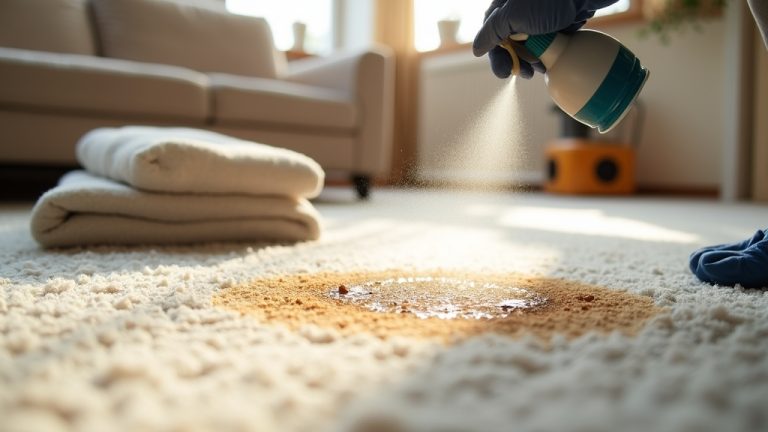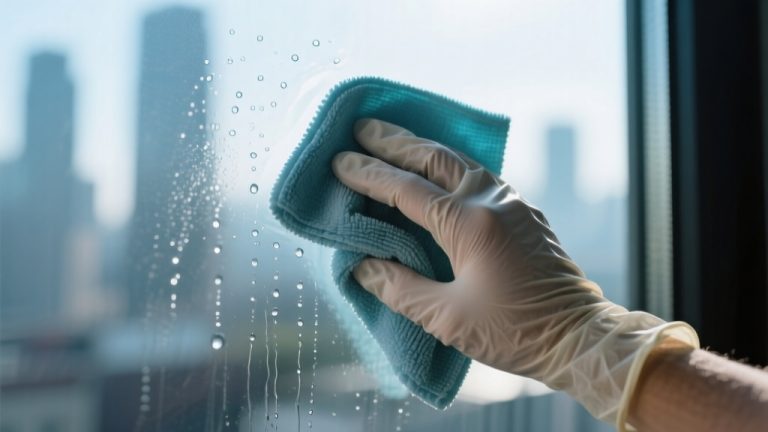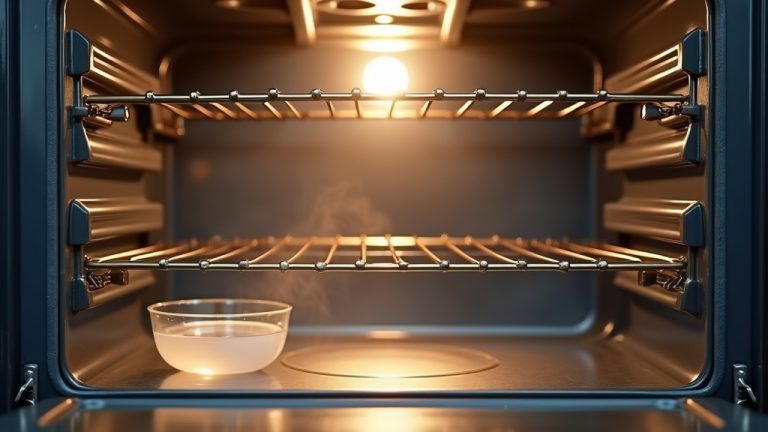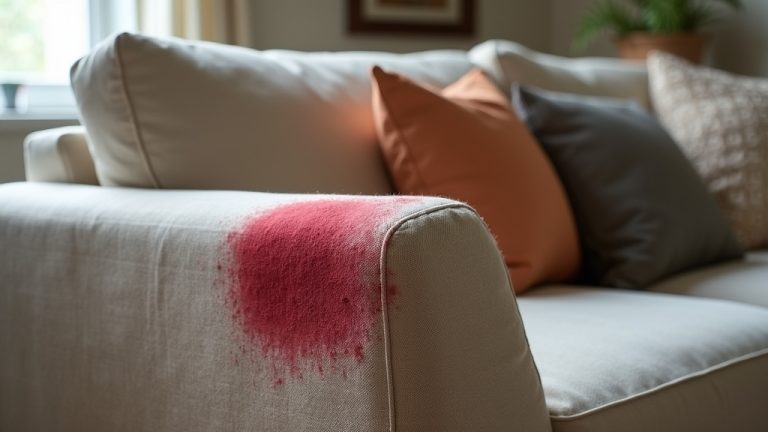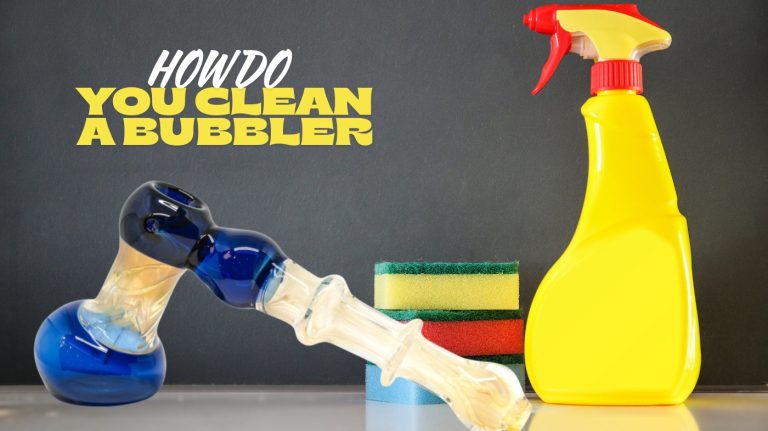Can I Use Bleach on Wood Floors? What You Must Know
You can use bleach on wood floors, but you need to be very careful. Bleach can weaken wood fibers, cause discoloration, and damage finishes, especially if left too long or used undiluted.
Always dilute bleach, test a hidden spot first, and rinse thoroughly. Wear protective gear and guarantee good ventilation.
For tough stains or mold, consider safer alternatives or professional help. Keep following these guidelines to learn how to protect your floor’s appearance and health safely.
Key Takeaways
- Bleach can damage wood floors by breaking down lignin and cellulose, causing discoloration, weakening, and finish degradation.
- Use diluted bleach (⅓ cup per gallon water) and test on a hidden spot before full application to avoid permanent damage.
- Limit bleach contact time to six minutes, apply in small sections, rinse thoroughly, and dry floors completely to minimize harm.
- Bleach fumes are hazardous; wear protective gear, ensure ventilation, and keep children and pets away during and after use.
- Safer alternatives include diluted vinegar solutions and wood-specific cleaners, with professional help recommended for severe stains or mold.
Chemical Effects of Bleach on Wood Floors
Although bleach is a powerful cleaning agent, it can cause significant chemical damage to wood floors by breaking down essential components like lignin and cellulose. Sodium hydroxide in bleach can degrade up to 95% of the lignin on the wood surface, weakening its structure.
Bleach breaks down wood’s lignin and cellulose, severely weakening floor structure.
When combined with hydrogen peroxide, bleach forms sodium hydroperoxide, which aggressively oxidizes tannins and lightens wood color.
Regular bleach use accelerates fiber breakdown, creating weak, loose surface layers that interfere with finishes.
Additionally, bleach shifts the wood’s surface pH from neutral to alkaline, altering its chemical environment. This change can affect both the wood and any protective coatings.
Because of these impacts, you should use bleach cautiously on wood floors to avoid compromising their integrity and finish.
For maintaining surfaces without damage, using biodegradable cleaners designed for delicate materials is a safer alternative.
Impact on Wood Floor Durability and Appearance
The chemical breakdown caused by bleach doesn’t just affect the wood’s composition—it also takes a serious toll on its durability and appearance.
Bleach strips away finishes like polyurethane and varnish, leaving your floor dull, patchy, and vulnerable to moisture and stains. Using bleach water can strip the floor finish, leaving floors dull and vulnerable.
Selecting appropriate cleaning tools with durable materials can help avoid unnecessary damage when maintaining floors.
Even diluted bleach can seep into porous wood, causing discoloration that’s often permanent. Structurally, bleach weakens wood fibers, increasing porosity and making floors prone to warping, swelling, and long-term wear. Porous surfaces like wood absorb bleach, causing permanent damage, so even diluted solutions are risky.
Protective coatings get compromised, exposing your floor to environmental damage and making maintenance tougher. If you use bleach, you’ll likely need refinishing to restore color and protection.
Keep in mind, damage varies with wood type and finish quality, so proceed cautiously and test hidden spots before considering bleach as a cleaning option. Always test a dilute bleach solution on a hidden area first extreme caution.
Health and Safety Considerations When Using Bleach
When you use bleach on wood floors, be aware that its strong fumes can irritate your respiratory system, especially in poorly ventilated spaces. Always guarantee good airflow and wear protective gear like masks and gloves to minimize exposure.
Taking these precautions helps keep you safe while cleaning effectively. However, because bleach contains corrosive chemicals, it can also damage the wood’s finish and surface, making it unsuitable for hardwood floors.
For safer cleaning, consider using mild detergent solutions that emulsify grease without harming surfaces.
Bleach Fume Hazards
How dangerous can bleach fumes be to your health? Bleach releases chlorine gas, which can irritate your throat and lungs, causing burning, coughing, and chest tightness.
In high concentrations or poor ventilation, symptoms may escalate to rapid breathing, airway swelling, and even respiratory failure, sometimes delayed by 36 hours.
The formation of secondary organic aerosols from bleach fumes can further impact respiratory health and environmental quality. It is essential to ensure proper ventilation when using bleach to minimize these risks.
Long-term exposure increases risks of chronic lung diseases like COPD. Your eyes are also vulnerable; bleach fumes can cause severe irritation, pain, and potentially damaging corneal ulcers. Skin contact causes burns and inflammation, especially on sensitive or broken skin.
Protective Measures Needed
Recognizing the health risks from bleach fumes means you need to take protective steps before using bleach on wood floors. Always wear chemical-resistant gloves, protective eyewear, long sleeves, and pants to prevent skin and eye contact.
Use respiratory protection if ventilation is poor, and ensure the area is well-ventilated. Do not work in poorly-ventilated spaces to avoid toxic fume exposure. Consider that harsh chemicals like bleach can also cause surface damage to sensitive materials such as wood.
Apply diluted bleach (about 1/3 cup per gallon of water) with a soft rag in small sections, avoiding direct pouring. Test a hidden area first and rinse thoroughly after treatment.
Keep children and pets away until the floor dries completely. Store bleach safely, don’t mix it with other chemicals, and have emergency contacts ready.
Situations That May Justify Bleach Use on Wood
You might consider using bleach on wood floors when severe mold or mildew is present and other cleaning methods fail. Always dilute the bleach properly and test it on a hidden area first to avoid damage.
It is important to mix ⅓ cup of bleach with 1 gallon of water to create a safe cleaning solution. When in doubt, seek professional guidance to guarantee safe and effective treatment.
Additionally, ensuring proper ventilation and monitoring the area during cleaning can help prevent potential overheating risks and safety hazards.
Severe Mold or Mildew
Although bleach is generally ineffective for deep mold remediation on wood floors, there are severe mold or mildew situations where its use might be warranted. If you face a heavy infestation that poses health risks—especially with immune-compromised or allergy-sensitive individuals present—bleach can serve as part of a quick, superficial treatment.
However, bleach only kills surface mold and may whiten or mask stains temporarily; mold roots embedded in wood remain alive. You should use bleach cautiously, with proper protective gear, and never mix it with other cleaners.
Prolonged exposure to bleach fumes can be harmful, so wearing a respirator and gloves is recommended to reduce health risks. For severe cases, combining bleach with agents like trisodium phosphate and following up with alcohol treatments can improve efficacy.
Since ventilation after cleaning helps reduce harmful chemical exposure, it is important to ensure good airflow during and after bleach application.
Remember, bleach alone won’t fully eradicate mold or mycotoxins; professional remediation or physical removal might be necessary to protect your health and wood floor integrity.
Dilution and Testing
When dealing with wood floors, proper dilution and testing of bleach solutions are essential to prevent damage while addressing stubborn stains or microbial concerns. Use a mild mixture, such as ⅓ cup bleach per gallon of water, or even less for sanitizing.
Always mix fresh and apply immediately to avoid prolonged exposure. It is also important to consider the chemical sensitivity of the wood finish when deciding on cleaning agents.
Before applying broadly, test the solution on a hidden spot to check for discoloration or finish damage. Consider these key points:
- Avoid bleach on worn or compromised finishes to prevent wood penetration and harm.
- Observe the test area for several hours to detect adverse effects.
- If the test reveals damage, opt for safer cleaning alternatives instead of bleach.
- It is important to note that most wood flooring types can be bleached with caution, but the process requires careful attention to the wood species and condition.
Professional Guidance Required
If severe mold or persistent stains resist all gentler cleaning methods, professional guidance becomes essential before using bleach on wood floors.
Experts can assess whether your floor’s finish can tolerate bleach without damage, especially in cases of heavy mold or discoloration. They understand that bleach can cause discoloration and blotching, which makes their expertise crucial in avoiding uneven patches.
Professionals often use specialized bleaching agents combined with sanding and refinishing to restore wood appearance safely. They also know how to neutralize and rinse surfaces properly to prevent lingering moisture or chemical damage.
For exotic or delicate woods, they recommend alternative treatments like oxalic acid. Attempting bleach use without expertise risks irreversible discoloration, swelling, or finish degradation.
When in doubt, consult a wood floor specialist who can tailor treatments to your floor type and condition, ensuring safe, effective restoration or deep disinfection.
Safer Cleaning Alternatives for Wood Floors
Since wood floors require gentle care to maintain their finish and durability, choosing safer cleaning alternatives is essential. Harsh chemicals like bleach can damage wood, so opt for milder, effective options to clean and protect your floors.
Here are safer alternatives to think about:
- Use diluted vinegar solutions (1 part vinegar to 3 parts water) for mopping, but test in a hidden spot first to avoid dulling the finish. Add essential oils for a pleasant scent. You can also incorporate a few drops of dish detergent into the vinegar-water mix for removing oil and dirt more powerfully.
- Regularly sweep or vacuum with a hardwood floor attachment to remove debris and prevent scratches. Avoid excessive moisture and dry the floors promptly to prevent moisture damage.
- Employ water-based cleaners designed specifically for wood floors, avoiding excess soap or soaking to protect the wood’s integrity.
Professional Recommendations on Bleach Use
Although bleach is a common household cleaner, professionals recommend specific types and careful methods when using it on wood floors to avoid damage.
Experts prefer oxalic acid for black iron stains and chlorine bleach for dye or organic stains, while two-part bleach systems help with significant color restoration. For professional wood floor bleaching, products like Woca Wood Line bleach are applied carefully with a small paintbrush to control the effect board by board.
Household bleach is generally reserved for exterior or non-porous wood. They advise never pouring bleach directly—apply it gradually with a brush or rag to control bleaching and avoid finish damage. Test small areas first and work in sections.
Protective gear and good ventilation are essential. Bleach use is only recommended if the finish is intact and the wood is bleach-safe. Improper use risks discoloration, brittleness, and damage, so consult a professional before proceeding.
Best Practices If Bleach Use Is Unavoidable
When you must use bleach on wood floors, taking careful precautions is essential to minimize damage. Start by diluting bleach properly—about ⅓ cup per gallon of water—and ensure the area is well ventilated.
Test the solution on a hidden spot to check for discoloration or damage before full application. Keep in mind that household bleach only affects surface stains and does not lighten the natural wood color.
Dilute bleach properly and test on a hidden spot to protect wood floors from damage.
Apply bleach evenly, avoid pooling, and limit contact time to six minutes. Afterward, rinse thoroughly with clean water and let the floor air dry completely.
Follow these best practices if bleach use is unavoidable:
- Wear gloves and eye protection to prevent irritation.
- Work in small sections for controlled application and quick rinsing.
- Keep pets and children away until the floor is fully dry to avoid exposure to harmful residues.
Frequently Asked Questions
Can Bleach Remove Pet Stains From Wood Floors?
Bleach can help disinfect and reduce odor from pet stains on wood floors, but it won’t fully remove deep or dark stains. You’ll need to dilute it carefully and avoid applying it on sealed wood since it won’t penetrate the finish.
For stubborn urine marks, specialized wood bleach products or enzymatic cleaners work better. Always test any bleach solution on a small, hidden spot to prevent discoloration or damage before treating the entire area.
How Long Does Bleach Need to Sit to Disinfect Wood Floors?
You need to keep the bleach solution visibly wet on your wood floors for at least 1 minute to disinfect according to CDC guidelines. However, manufacturers like Clorox recommend about 4 to 6 minutes for thorough disinfection.
Be cautious—longer contact increases damage risk to wood finishes. Always rinse and dry floors promptly after that time to protect your flooring while ensuring effective disinfection.
Will Bleach Cause a Strong Odor on Wood Floors After Cleaning?
Yes, bleach will cause a strong odor on wood floors after cleaning. Because wood is porous, it traps bleach fumes, making the chlorine-like smell linger longer and often become overwhelming.
You’ll need proper ventilation and natural remedies like baking soda or activated charcoal to reduce the odor.
Keep in mind, the smell may persist for days, especially if the bleach penetrates the wood’s surface or damages the finish.
Can Bleach Be Used on Engineered Wood Flooring Safely?
You shouldn’t use bleach on engineered wood flooring unless it’s an extreme case like severe mold. Even then, dilute it heavily and test a hidden spot first.
Bleach can damage the finish, cause discoloration, and warp the wood by penetrating its layers.
Instead, opt for cleaners made for engineered wood and use microfiber mops to avoid moisture damage.
Protect your floor and indoor air quality by avoiding harsh chemicals whenever possible.
What Should I Do if Bleach Accidentally Spills on My Wood Floor?
If bleach spills on your wood floor, blot up the excess immediately with a dry cloth to stop it soaking in.
Rinse the spot with clean water to dilute the bleach, then ventilate the area well.
Apply a vinegar and baking soda paste to neutralize leftover bleach, letting it sit 15–30 minutes before wiping clean.
Check for damage—light sanding or stain markers can help, but call a pro for severe corrosion or warping.
Protect Your Wood Floors With Gentle, Effective Care
You should think twice before using bleach on your wood floors—it can damage them more than a thousand storms. While bleach might seem like a quick fix, its harsh chemicals can weaken your floor’s durability and dull its appearance.
Always consider safer alternatives first. If you absolutely must use bleach, follow professional guidelines carefully and prioritize your health and safety. Remember, preserving your wood floors is worth far more than a temporary sparkle.


